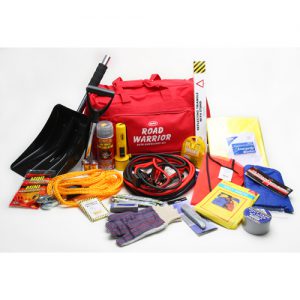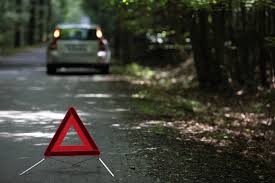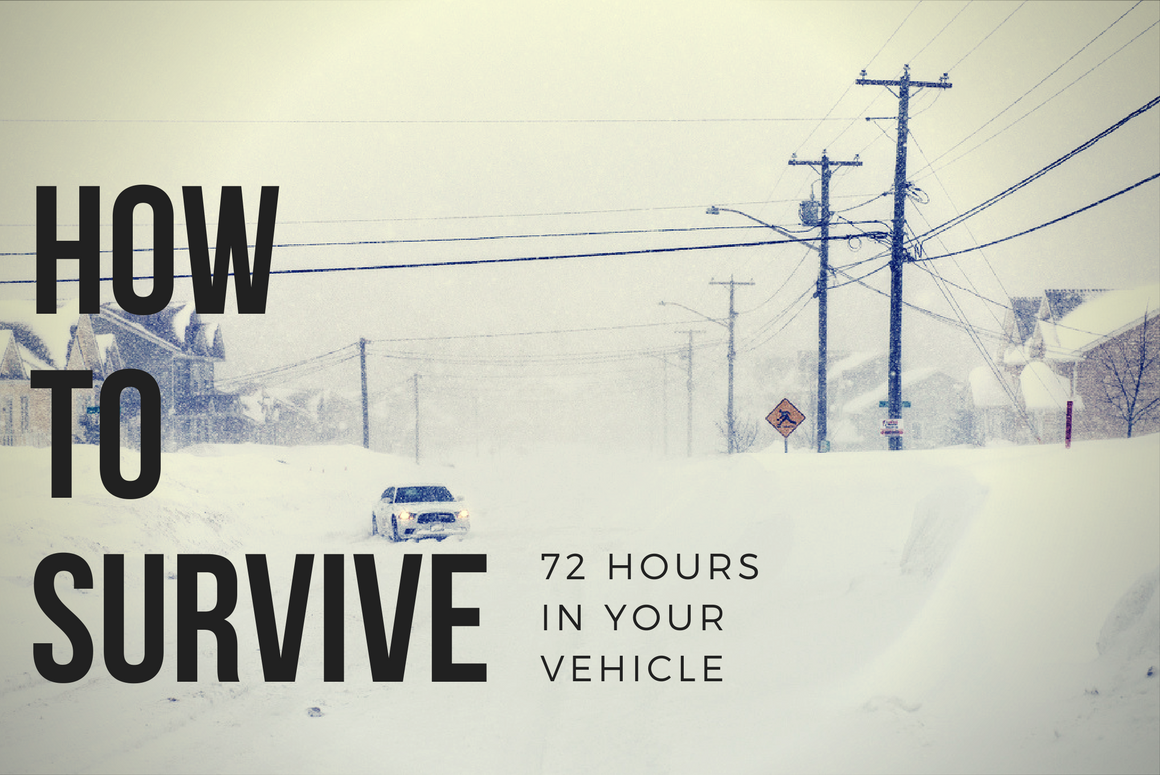Unfortunately, emergencies are never planned and always unexpected, so it’s not entirely unrealistic to consider that one might happen during your morning or evening commute, whether it’s a flat tire or a winter snow storm. No matter what vehicle you are driving in, having an emergency kit and plan that you are familiar with can help you if you have to stay with your car or truck for an extended period of time.
Create or Update Your Vehicle Emergency Kit

Having the right emergency supplies in your vehicle can make the emergency that much easier to deal with. Most of the items you’ll want in your car emergency kit will be like those in your home, but you’ll want to make sure that everything is in a compact format that’s also easy to transport if you have to move (usually a backpack works great).
You can always customize your kit with items that are specific to you and anyone you might be traveling with regularly, but the items that you should always have in your kit are:
- Food that won’t spoil (energy or protein bars are best)
- Water in plastic bottles (change every 6 months)
- Blanket
- Extra clothing and sturdy shoes
- First aid kit (with seatbelt cutter)
- Small shovel, scraper, and snowbrush
- Candle in a deep can with waterproof matches
- Flashlight (a wind up one is best but if you’re using batteries, check them regularly)
- Whistle (in case you need to attract attention)
- Roadmaps (don’t assume that your smartphone or GPS battery will last forever)
- Copy of your emergency plan and personal documents
Here’s a checklist that you can print off and work your way through, and for additional items you might want to include, check out Suggested Items for a 72-Hour Car Kit.
Familiarize Yourself with Everything
Whether it’s the items in your emergency kit, tools within the car, your fire extinguisher, or jumper cables, take the time to familiarize yourself with everything ahead of time. That way, in the event of any emergency, you know how to use everything right away, and won’t waste time trying to learn under pressure. This can also save you valuable time if you’re trying to get back on the road, or if you need to hunker down and wait for help.
Check Your Vehicle Before You Drive
Before you head out on the road, especially if you’re going on a long road trip, do a complete check of all the supplies, tools, and mechanics of your vehicle. Make sure your windshield washer fluid is topped up, check for leaks or debris under the hood, check the pressure in all of your tires, and get yourself a toolkit.
It’s also a good idea to check the weather before you leave, and always let friends or family know where you are going, and when you expect to arrive or return home. Make sure you have a full tank of gas, and make frequent stops to refresh yourself and top up with gas (you never want to be much below a half tank wherever possible).
If You Get Stranded

Severe weather is probably the most likely reason you’ll have to stay in your vehicle, and while it’s not advisable to go out at all in a blizzard, there may be occasions where it’s impossible to avoid (perhaps if you were already on your way home when the storm arrived).
Here are a few things to remember to help you stay as safe as possible until you can get back on the road or help arrives:
- If you become caught in unsafe driving conditions, pull over and stay put – limited visibility and extreme weather can lead to accidents. However, if you are close to a building, and can reach it safely, that’s your best option for shelter.
- Once you are pulled over safely, clear your car’s exhaust of snow to avoid carbon monoxide build up in the car, and regularly check during your time stopped to make sure it stays clear.
- Turn your car on and run it occasionally for heat (about 15/20 minutes is good) – doing so intermittently helps conserve gas but allows you to get some warmth when you need it. It’s also a good idea to crack the windows to allow fresh air to circulate.
- Use your additional clothing and blanket to stay warm while you’re in the car – keeping your head covered will help reduce the amount of heat your body can lose in colder temperatures.
- Keep yourself moving! This helps to keep you warm, so do whatever you can in the small space you have around you – clap your hands, flex your legs, or get out and stamp your feet (as long as you’re not in a blizzard!).
- Try to stay as hydrated as possible – if you’re in a snowstorm and have no water, or you’ve run out, you can melt snow to drink (never eat snow directly as the process that your body has to go through to heat and melt the snow once you eat it can dehydrate you or cause hypothermia).
- Turn on your car’s hazard lights and if you have roadside flares or even a reflective triangle in your trunk, put them near your car to alert other drivers or rescuers that you are there.
For more winter blizzard survival tips, check out this great article from The Weather Channel and these extra tips for What to Do When You’re Stranded in Your Car.
Terms and Conditions
All content provided on this blog is for informational purposes only. The owner of this blog makes no representations as to the accuracy or completeness of any information on this site or found by following any link on this site. The owner will not be liable for any errors or omissions in this information nor for the availability of this information. The owner will not be liable for any losses, injuries, or damages from the display or use of this information. This policy is subject to change at anytime.

